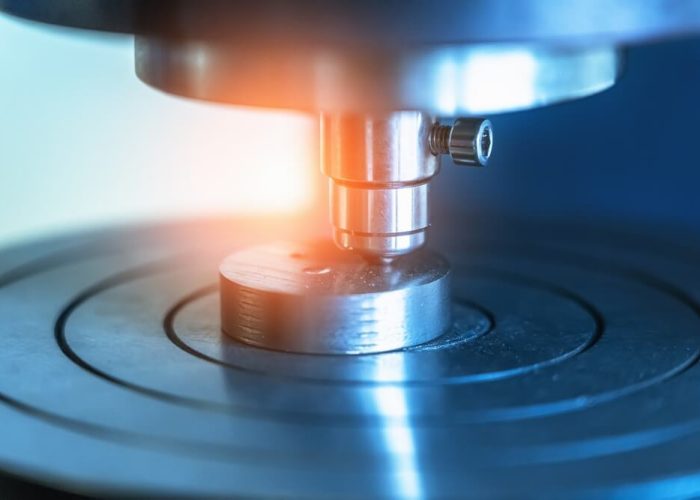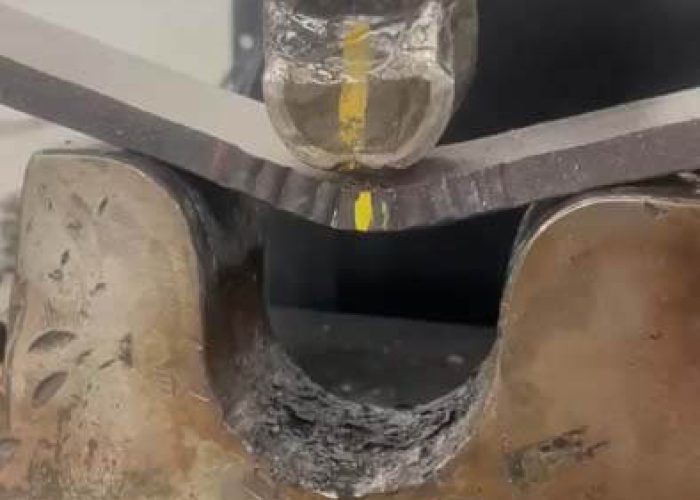Ultrasonic Thickness Testing: It Matters for Structural Integrity
We’ve all seen the catastrophic consequences of structural failures in bridges, pipelines, and aircraft. What we don’t see is the invisible deterioration happening beneath surfaces—corrosion, erosion, and fatigue gradually weakening critical components. Ultrasonic thickness testing provides our defense against these hidden threats, measuring material thickness with precision to detect dangerous thinning before failure occurs. The technology seems straightforward, but its proper application requires understanding complex variables that can mean the difference between safety and disaster.

Key Points
- Ultrasonic thickness testing detects material degradation and corrosion before they compromise structural safety in critical infrastructure.
- Industries like aerospace and offshore oil rely on this technology to prevent catastrophic failures in high-risk environments.
- Advanced signal processing and multi-channel systems provide precise measurements of remaining material thickness even in challenging conditions.
- Regular testing according to industry standards helps maintain compliance with regulations like FAA AC 43-13 for critical components.
- Early identification of thinning materials through ultrasonic testing enables preventive maintenance, extending asset lifespan and reducing costs.
The Science Behind Ultrasonic Thickness Testing
To understand ultrasonic thickness testing (UTT), we must first examine its fundamental scientific principles. UTT relies on the physics of sound wave propagation through materials.
We use transducers that emit high-frequency sound waves (typically 0.5-25 MHz) into the test material, then measure the time it takes for these waves to reflect from the back wall and return.
Ultrasonic thickness testing hinges on measuring echo times of high-frequency waves as they bounce through materials with incredible precision.
This time-of-flight measurement, combined with the known velocity of sound in the specific material, allows us to calculate thickness with remarkable precision—often to within 0.001 inches. The equation is straightforward: thickness = (velocity × transit time)/2.
What’s fascinating is how UTT exploits the acoustic impedance differences between materials, causing reflection at interfaces. We’re basically measuring echoes, much like bats traversing in darkness, but for industrial integrity assessment.
Like other ultrasonic techniques, UTT requires proper coupling agents to facilitate sound wave transmission between the transducer and the test material.
Critical Applications Across Industries
We’ve implemented ultrasonic thickness testing across several critical industries where material integrity directly impacts safety and operational continuity.
In aerospace, our protocols require precise measurements of aircraft components to prevent catastrophic failures, while offshore oil platforms rely on this technology to monitor corrosion in harsh marine environments.
Infrastructure maintenance teams utilize these measurements to detect potential structural weaknesses in bridges, pipelines, and buildings before they escalate into costly or dangerous failures. Our comprehensive services also include calibration services to ensure measurement accuracy and reliability across all testing equipment.
Aerospace Safety Protocols
While ultrasonic thickness testing forms the backbone of numerous industrial inspection protocols, its application in aerospace safety represents perhaps the most stringent implementation of this technology.
In aerospace, we’re bound by FAA regulation AC 43-13 and ATA 105 specifications, which mandate precise thickness measurements of critical components.
We utilize A-scan techniques with longitudinal wave transducers at frequencies between 5-10MHz to detect component thinning before it reaches unsafe thresholds.
Our certified Level II inspectors follow a three-tiered verification system when examining aircraft skin, engine components, and landing gear assemblies.
This methodology guarantees detection of corrosion pitting as small as 0.002 inches—well before structural integrity becomes compromised.
For composite structures, we’ve adapted special techniques that account for material anisotropy while maintaining measurement accuracy within ±0.001 inches.
Offshore Oil Platforms
Since offshore oil platforms operate in some of the world’s harshest environments, ultrasonic thickness testing serves as a critical integrity management tool for these massive structures.
We rely on this technology to monitor corrosion rates in subsea pipelines, risers, and structural members continuously exposed to saltwater immersion and wave action.
We’ve implemented scheduled testing protocols that identify wall thickness reductions before they reach critical thresholds.
This proactive approach prevents catastrophic failures that could result in environmental disasters, production losses, or worker fatalities.
Our industry standards mandate specific inspection frequencies based on environmental severity, component criticality, and historical degradation rates.
Infrastructure Damage Prevention
Ultrasonic thickness testing extends beyond offshore applications to form the backbone of thorough infrastructure damage prevention programs across multiple industries.
We’ve implemented these systems across power generation facilities, chemical processing plants, and critical transportation networks where structural failures carry severe consequences.
In our experience, early detection of wall thinning in pipelines, pressure vessels, and load-bearing structures allows us to prevent catastrophic failures, optimize maintenance schedules, and extend asset lifespans.
We’re particularly reliant on this technology for infrastructure hidden from visual inspection, such as buried pipelines or insulated components.
The data we gather helps us build thorough integrity management programs, establishing measurable corrosion rates that inform prediction models.
Detecting Hidden Corrosion and Material Loss
Corrosion represents one of the most insidious threats to structural integrity across numerous industrial applications. Unlike visible surface deterioration, internal corrosion often progresses undetected until catastrophic failure occurs. We’ve found ultrasonic thickness testing to be invaluable for identifying these hidden threats.
By measuring sound wave reflections through materials, we can pinpoint areas where wall thickness has diminished below acceptable thresholds. The technology allows us to detect corrosion in pipelines, storage tanks, pressure vessels, and maritime structures without destructive intervention. When we identify thinning regions early, we’re able to implement targeted maintenance strategies before operational safety becomes compromised.
Our data indicates that regular ultrasonic inspections reduce unplanned downtime by up to 73% while extending asset lifespans substantially. This proactive approach transforms unpredictable failures into manageable maintenance schedules. Much like other specialized NDT techniques, ultrasonic testing scrutinizes the physical characteristics of materials to ensure safety and reliability in critical infrastructure.
Comparing Ultrasonic Methods to Alternative Testing Techniques
While numerous non-destructive testing methods exist for thickness measurement, ultrasonic techniques consistently demonstrate superior capabilities in several critical aspects. Unlike radiographic testing, we don’t need to worry about radiation hazards or access to both sides of the material. Compared to magnetic flux leakage, ultrasonic methods offer greater precision and aren’t limited to ferromagnetic materials.
Ultrasonic measurement stands alone, offering unmatched precision without radiation risks or material limitations.
Visual inspection and penetrant testing can’t detect subsurface flaws that we easily identify with ultrasound. Eddy current techniques are effective for thin materials but can’t match our ultrasonic depth capabilities.
When we need to examine thick-walled vessels or complex geometries, ultrasonic thickness testing provides quantitative data with minimal preparation and real-time results.
For critical infrastructure where reliability matters, ultrasonic methods deliver the ideal balance of accuracy, speed, and accessibility. Advanced NDT methodologies ensure timely identification of potential defects before they lead to structural failures.
Equipment and Technology Advancements in Ultrasonic Testing
Modern ultrasonic thickness testing has evolved substantially with the introduction of portable digital gauges that offer field technicians unprecedented mobility and accuracy.
We’ve observed substantial progress in advanced signal processing algorithms that can filter noise, enhance resolution, and provide more reliable measurements in challenging environments.
Multi-channel array systems now enable simultaneous inspection of larger areas with improved detection capabilities, reducing inspection time while expanding coverage.
These advancements come as a significant complement to traditional methods like radiography testing, providing crucial insights into weld integrity without the need for radiation safety protocols.
Portable Digital Gauges
The development of portable digital gauges represents a significant advancement in ultrasonic thickness testing technology. These lightweight devices have revolutionized field operations by combining precision with mobility, allowing us to perform inspections in locations previously inaccessible with traditional equipment.
Modern portable gauges feature high-resolution displays, rechargeable batteries with extended life, and ruggedized casings designed for harsh industrial environments. We’ve seen integration of wireless connectivity enabling real-time data transfer to central databases, facilitating immediate analysis and documentation. Many units now incorporate advanced signal processing algorithms that compensate for material variables and surface conditions.
The miniaturization of components hasn’t compromised accuracy; today’s portable gauges achieve precision comparable to laboratory equipment while fitting comfortably in our hands, making them indispensable tools for all integrity assessment professionals.
Advanced Signal Processing
Recent advancements in signal processing algorithms have dramatically transformed ultrasonic thickness testing capabilities, enabling unprecedented levels of accuracy and reliability in material evaluation.
These innovations allow us to extract meaningful data from previously uninterpretable signals, even in challenging environments.
- A-scan digitization at 100MHz+ sampling rates reveals microscopic material discontinuities
- Adaptive noise filtering algorithms isolate critical signal components in high-interference environments
- Multi-element transducer processing enhances resolution beyond conventional physical limitations
- Real-time wavelet transformation techniques identify subtle material property variations
- Machine learning integration enables predictive analysis of developing structural weaknesses
We’re witnessing a paradigm shift in how we process ultrasonic data.
What once required expert interpretation can now be automatically analyzed, characterized, and flagged by intelligent systems.
This democratization of advanced signal processing empowers all technicians in our industry with capabilities previously reserved for specialists.
Multi-Channel Array Systems
Building upon signal processing innovations, multi-channel array systems represent a fundamental evolution in ultrasonic testing equipment architecture.
These systems employ multiple transducers arranged in phased arrays that simultaneously transmit and receive ultrasonic signals, creating an exhaustive visualization of the tested material.
We’ve seen dramatic improvements in inspection efficiency as these arrays can cover larger areas without repositioning.
The ability to electronically steer and focus beam patterns allows us to examine complex geometries previously inaccessible with conventional single-element probes.
Real-time data fusion from multiple channels enables three-dimensional mapping of defects with superior resolution and positioning accuracy.
For our community of NDT professionals, multi-channel systems offer tangible advantages through enhanced probability of detection, reduced inspection time, and improved characterization of critical flaws that might compromise structural integrity.
Implementation Challenges and Best Practices for Reliable Results
Despite numerous technological advancements in ultrasonic thickness testing, achieving consistently reliable results remains challenging due to various implementation factors.
Ultrasonic thickness testing advances continue, yet reliable implementation remains elusive amid practical challenges.
We must address these challenges systematically to guarantee structural integrity assessments maintain accuracy across diverse testing conditions.
- Surface preparation inadequacies that invalidate measurements, potentially leading to catastrophic failures
- Instrument calibration errors that undermine data reliability and decision-making confidence
- Coupling inconsistencies that introduce phantom readings and compromise testing integrity
- Operator variability that introduces human factors affecting measurement repeatability
- Environmental conditions that interfere with ultrasonic wave propagation and signal interpretation
Maintaining climate-controlled rooms during testing is essential for preventing environmental fluctuations that could compromise ultrasonic signal integrity and measurement accuracy.
Frequently Asked Questions
How Much Training Is Required to Perform Ultrasonic Thickness Testing?
We typically require 40-80 hours of formal training for UT thickness testing, plus supervised field experience. Certification levels (I-III) demand progressively advanced training and demonstrated competency with our equipment.
What Is the Typical Cost Range for Ultrasonic Testing Equipment?
We’ll find basic ultrasonic testing units starting at $2,000-5,000, while advanced systems with multiple features range from $10,000-30,000. High-end industrial equipment can exceed $50,000 depending on specifications required.
How Often Should Ultrasonic Thickness Testing Be Performed?
We recommend testing intervals of 6-12 months for critical assets, though frequency varies based on corrosion rates, industry standards, and regulatory requirements. Your specific equipment’s risk profile determines ideal scheduling.
Can Ultrasonic Testing Be Conducted on Painted or Coated Surfaces?
Yes, we can conduct ultrasonic testing on painted or coated surfaces. However, we’ll need to account for coating thickness in our measurements to guarantee accurate substrate thickness determination.
What Accuracy and Precision Can Be Expected From Ultrasonic Measurements?
We can achieve accuracy within ±1-2% of material thickness with modern ultrasonic systems. Precision typically ranges between 0.001-0.1mm, depending on calibration quality, surface conditions, and transducer selection.
Takeaway
Ultrasonic thickness testing remains our most reliable tool for ensuring structural integrity. We’ve examined its scientific principles, industry applications, and superiority in detecting hidden defects. As equipment continues to evolve with higher resolution capabilities and improved signal processing, we’ll overcome current implementation challenges through proper calibration, surface preparation, and technician training—essential steps for maintaining safety-critical infrastructure in increasingly demanding operational environments.



